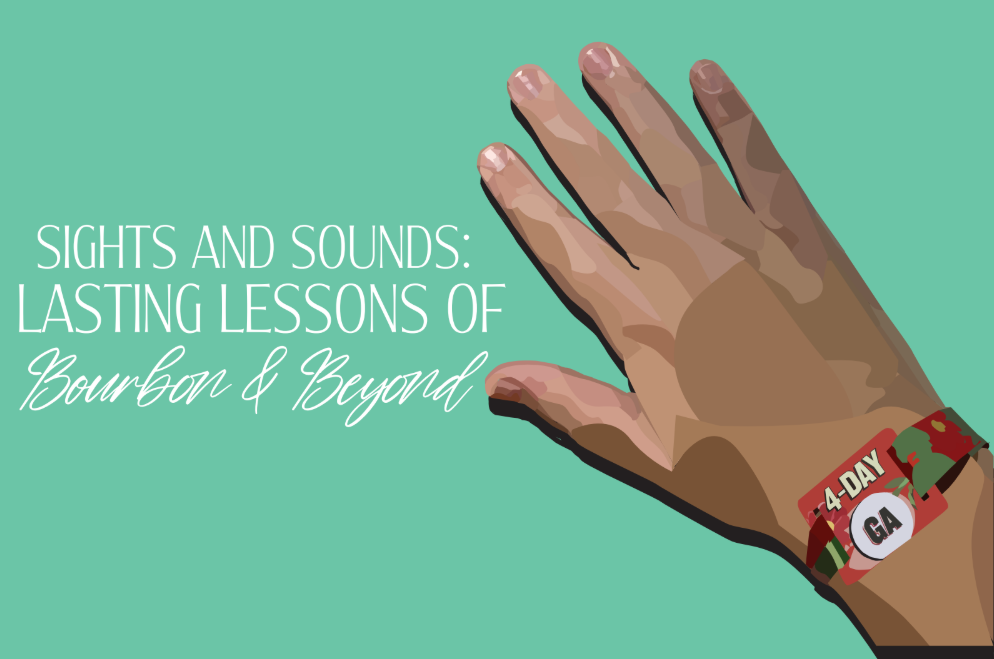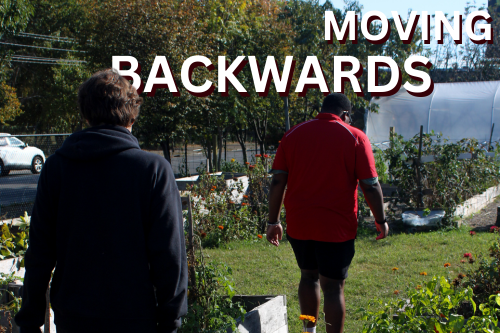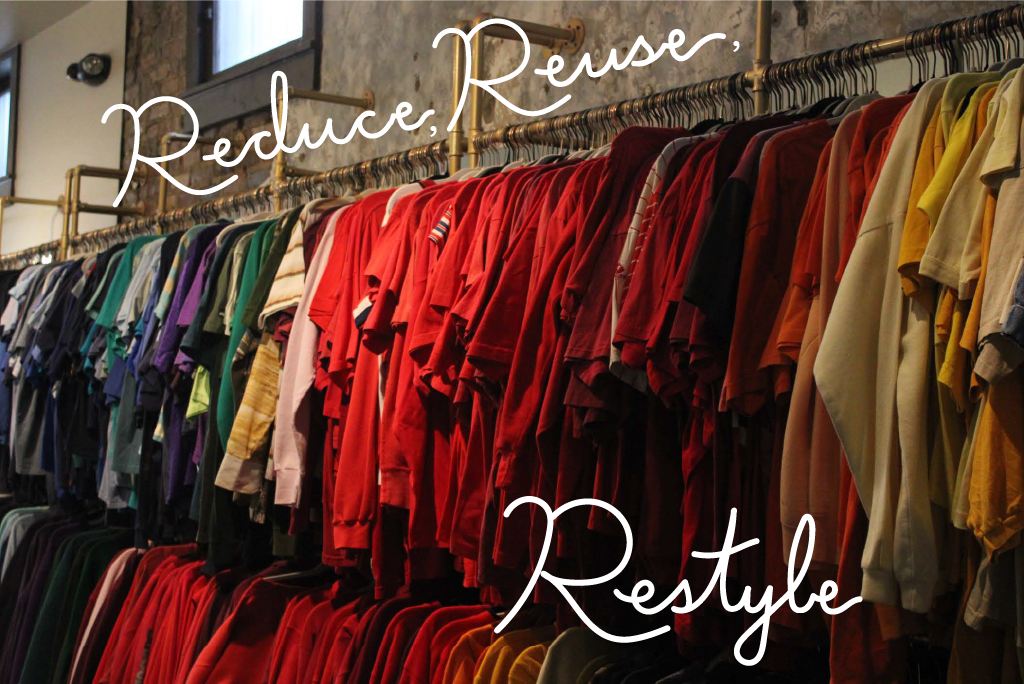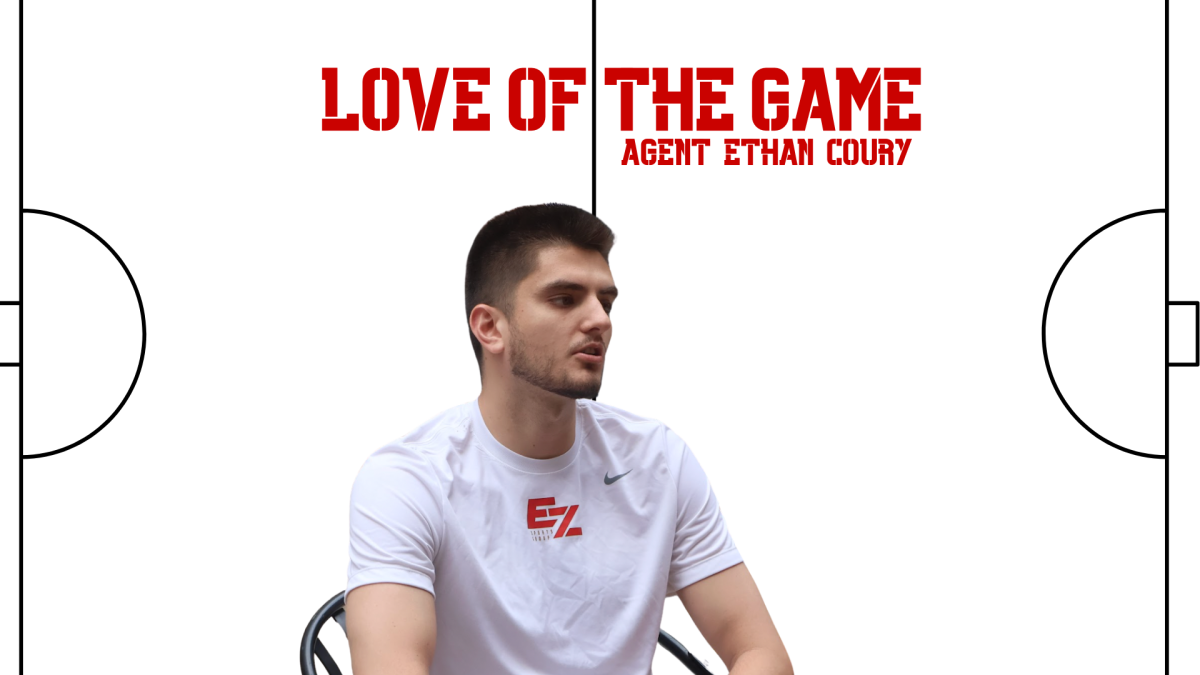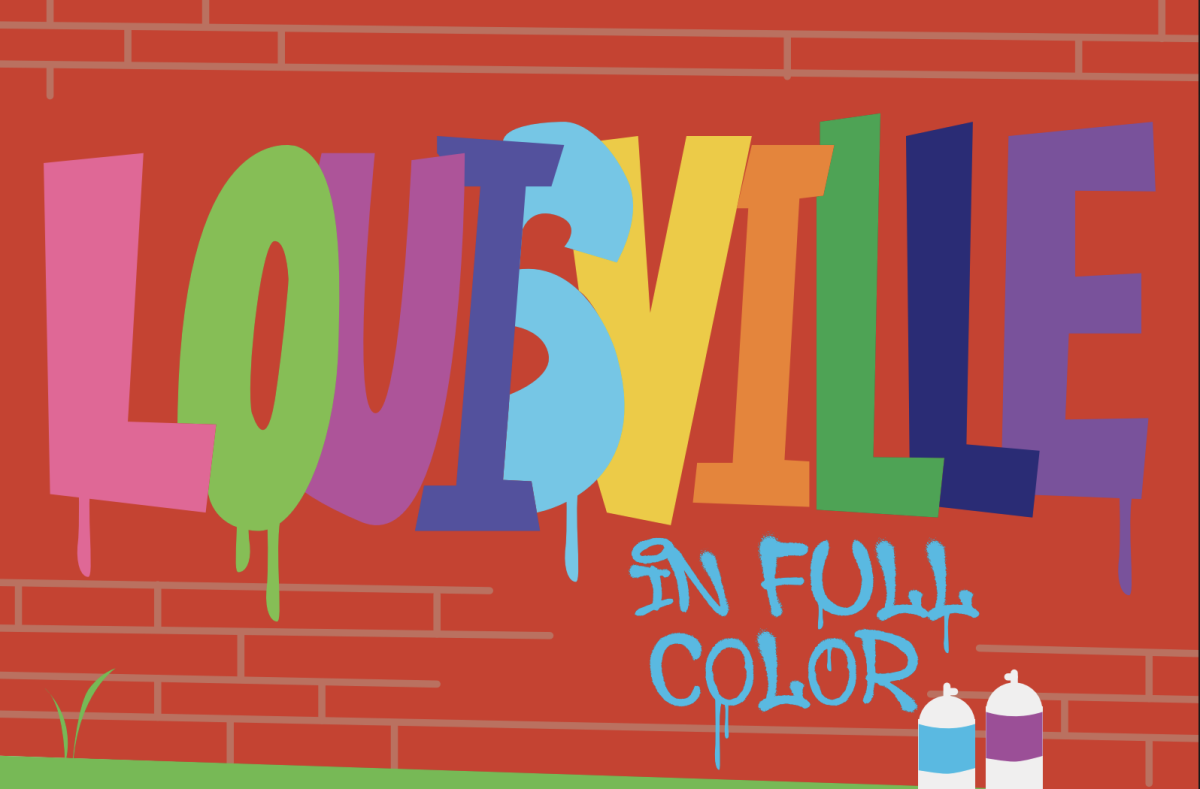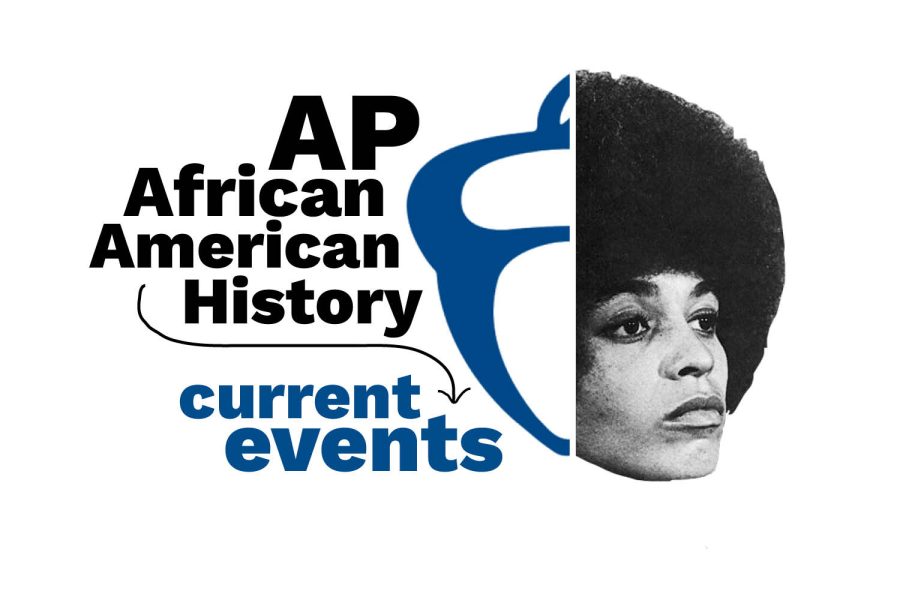One centimeter to the left. Back to the right. One half of a centimeter to the left.
Too far.
Runny beads of sweat began to form on Emma Engilman’s powdered forehead, making their way down her sculpted cheekbones, past the concealed blemishes and bright orange lipstick. It’s meant to be a “fall” look. The lights beat down, cutting the small corner of the room into a shiny white box.
All this for 33 subscribers.
“This is the difference between creating a blog post and creating a YouTube post,” Engilman said.
For YouTube: “You have to get the lights right, you have to get the camera right, you have to position it all right, you have to get everything ready, you have to set it up, and you have to take it down, and you have to clean up, and then you have to edit the video,” Engilman said. “It takes a lot, lot longer.”
Engilman, a 17-year-old junior at Eastern High School, is not a native YouTuber; she’s a blogger. “The Little Lace Dress,” Engilman’s blog, was a finalist in a 2014 Teen Vogue sweepstakes and is full of fashion posts and pictures of Engilman modeling her latest finds. Instead of standing alone, The Little Lace Dress uses YouTube to support and expand its reach across social media.
“My blog’s my main source of putting stuff out there,” Engilman said. But: “YouTube is such a great way to get a bunch of views — fast.”
Engilman is not the only one to take advantage of YouTube’s audience.
Meet Kate Duncan, another YouTuber interested in makeup and fashion and who has a loyal following across social media:
3,365 followers on Twitter.
45,400 followers on Instagram.
72,265 subscribers on YouTube.
And counting.
Two years ago, Duncan went on a medical leave from school due to heart problems and got very bored.
“I was going to doctors’ appointments and therapist appointments and I needed something to do,” Duncan, now a 17-year-old junior in high school, said. So she turned to YouTube.
Having already networked to gain upwards of 40,000 followers on Instagram, Duncan’s main concern was transferring that following to her new medium: YouTube.
“My mom was very scared, because she has always been an advocate for internet safety,” Duncan said. “I thought she was going to tell me to delete it.”
According to Duncan, she didn’t actually tell her parents when she first started putting herself out there. By the time she decided to come clean, she already had a substantial fan base. In the end, however, Duncan said that her parents were supportive of her decision.
“I just have to keep my grades up and stuff for me to keep doing it. And so, and that’s what’s really a challenge now for me,” said Duncan. “It’s keeping on top of that [YouTubing], because it is my job now, and keeping up with school, too.”
YouTubing is, indeed, a “job” for Duncan, who spends countless hours recording for profit. In fact, many YouTubers have begun to realize that the business is quite lucrative, with the number of channels earning six figures annually up 50% from last year, according to YouTube’s website. According to Forbes magazine, Felix Kjellburg, known by his screen name PewDiePie, was the top-earning YouTuber of 2015 making about $12 million over the course of the year.
“I started realizing that I could be making money off of this,” said Duncan, who now works with AwesomenessTV, a media and entertainment company based in Los Angeles.
Duncan is paid based on the amount of views her videos get, the amount of subscribers she has, and the amount of interaction she receives on each of her videos. Therefore, Duncan tries to put her best content forward for the best results. It costs time and effort, but the reward is considerable: paychecks and a good reputation as a professional YouTuber.
Duncan’s latest achievement is her new app “Kate Duncan,” released November 7, 2015, offering yet another place for her followers and subscribers to access her YouTube channel’s video content. So far, the app holds an average of 5 stars in the App Store with reviews titled “Really good” and “IN LOVE.”
“I make them because I love to entertain people. I love to make people feel a certain way and I think that with each one of the films that I make, I try to inflict a different emotion.”
Mark Vogt does not have an app in the App Store or as impressive a following as Duncan on YouTube, but the 18-year-old St. Xavier High School senior has graduated to a more advanced level of videography. Besides having recently finished his newest film “East Point,” a six-month-long undertaking, he won Honorable Mention at the 2013 White House Student Film Festival, has held several public premieres of his work, and has just announced his newest project, “Leo’s Awakening,” a Star Wars comedy. Indeed, Vogt is one of the more serious, classic filmmakers someone might stumble upon while browsing YouTube.
Yes, YouTube.
“It started as a place to keep everything; I had all these videos and I would just put them up, and they were really small and little, but then eventually it became a way to connect and share with people,” Vogt said. “YouTube is a really great place for creative people to do what they want to do and get immediate response.”
Vogt started to experiment with advanced film in his debut channel, “Mrstarwarsfan66.” From here, he began to learn.
“With technology today you don’t have to have a ton of money to go out and create something,” Vogt said. “If you don’t know how to do something, you just search it and your answer’s there or someone in the comments is there to help you.”
This do-it-yourself quality of modern filmmaking has made what originally required expensive equipment and experts much easier to pursue.
Cue MAV Films, Vogt’s self-made production company bearing the initials of his full name: Mark Alex Vogt. For MAV Films, YouTube was a springboard, giving Vogt a place to experiment with short films that fit the YouTube way of video: click, watch, share.
Vogt’s new channel, MAV Making, now has 1,674 subscribers, and most of his audience consists of teenage Louisville. But through YouTube, Vogt has had the opportunity to further expand his reach alongside other forms of social media such as Instagram.
“I knew that if I was able to integrate that and YouTube together, then followers would keep going and subscribers, the amount would just go up,” Vogt said. “I knew from that point as long as we produced something big enough and kept going and doing more that eventually people would start to catch on.”
By “we,” Vogt means his team, the close to 20 people that make hours of strenuous script-writing come to life.
“I’m just a guy that basically organizes everything, but I really just want to reiterate everyone’s hard work that goes into it. There are so many people that work day and night to make these things possible,” Vogt said.
Because of the extremely thin profit margins, most of the group behind MAV Films is made up of teenagers who don’t come with a huge price tag.
“Very rarely do we bring in someone who’s much older than us,” Vogt said. “One, that’s for price. It’s very expensive to bring on people. And two, it’s kind of nice to see what we can do with us.”
Although his team members are technically employed, according to Vogt, paychecks are few and far between. After all expenses are accounted for, extra cash to divide between cast and crew is scarce. But the people behind MAV Films are not in it for the money.
“I make them because I love to entertain people. I love to make people feel a certain way and I think that with each one of the films I make, I try to inflict a different emotion,” said Vogt.
Recent films, such as “East Point” and its precursor “Echo Trail” are riddled with dark plots and more gritty, dramatic themes; however, Vogt noted that his favorite films are the happy ones.
“I love the light-hearted stuff. I love it when people come out of the theater, or wherever I’m showing it, and they just feel happy,” he said. “They feel good.”
With a growing following in Louisville, Vogt has also gained a volunteer workforce.
“People see the product, and they see that it’s done and it’s finished and it’s got an endpoint and they’re like, ‘Oh, what can we do to help on the next one?” Vogt said. “That’s the biggest reward that I think I could ask for: getting that support to go forward.”
Duncan on the other hand is more of a solo act and has struggled with the immense time commitment required to run her YouTube channel all on her own. Though she has found a way to cope with the responsibilities of school and YouTube, Duncan still misses out on opportunities, especially with her family.
“I would miss out on my brother’s and sister’s games and stuff to film a video and it was really hard, I think, for my family to understand,” said Duncan, emphasizing that the time it takes her to film a video is time going towards both her job and her hobby.
Overall, Duncan has found that the solutions to a more bearable workload are the scheduling and organization methods that have become time-saving habits for her.
Despite the solutions Duncan now uses to handle the problem of time commitment, there are larger things at risk, one being Duncan’s privacy. Aside from her mother’s worries about Internet safety, Duncan tries to limit the amount of information she discloses to her wide fan base in order to protect what privacy she has left.
“It’s really tough because some of my friends, they can post certain things on Instagram and Snapchat and stuff like that that I have to refrain from doing, like using curse words,” she said. “I really try not to as much as possible, because I don’t want to damage my reputation. Some girls do consider me their role model which is crazy, but I also, I don’t want to be a bad role model.”
Similarly, Duncan’s extreme popularity has lead to limitations involving her family members. A few months ago, Duncan’s younger sister asked Duncan not to tag her in Instagram photos anymore.
“I guess people say stuff to her at school and that really kind of makes me upset,” Duncan said.
But Duncan understands that this situation can be difficult for the people around her.
“I just try and make sure it’s okay with everyone who is in my pictures for me to post them, because the last thing I want is to be exploiting someone else’s life,” she said. “I know I’m definitely putting myself out there and I don’t want to take anyone with me.”
duPont Manual High School counselor Marti Johnston knows about the negative impact an increased social media presence can have on teens’ lives.
“It forces them to grow up a little bit faster,” she said. “They’re getting a lot of recognition and maybe just things that they’re just not ready for.”
According to YouTube’s website, the sheer amount of YouTube users is equivalent to almost one-third of the Internet population. Everyday people watch hundreds of millions of hours on YouTube, generating billions of views.
With such a huge audience, negative comments or interaction on videos can prove to be a powerful influence on teen YouTubers’ emotional well-being.
“If you’re the type of person that will constantly think about those negative comments, then it will hurt you and your self-esteem,” said Johnston.
Vogt has first hand experience with such situations. MAV Films’ popularity has brought in criticism as well, and while most of the comments are positive, Vogt has also had to deal with “creative input” from experts and average viewers alike.
“I think the hardest part for the crew and the team is that dislike bar. That like-dislike bar,” said Vogt, referring to the meter measuring likes and dislikes beside each video on YouTube. “It’s always a very divisive thing, especially films. It’s always a very like it, hate it. There’s no in between.”
But Vogt keeps his head up, noting that the positive comments and the group dynamic of MAV Films are what keep him going.
“I’d say that our greatest success is coming together as a group, our greatest success is working together, even though there are always going to be ups and downs as a group of teenagers working in a business environment, Vogt said.

Engilman took the most lighthearted approach.
“I have gotten some negative comments, but usually when I get negative things I just laugh it off; I think it’s funny,” said Engilman. “I remember there was this one time where I got a “hate” comment and I posted it on twitter and I was like, ‘OMG my very first hate comment! I’m moving up in the world!’”
Johnston stresses the importance of having a strong support base to counter negative feedback. This support may come from friends, family, even fans, recognizable only by their usernames.
“If you have a support team and you have a positive attitude about it, and you really believe in what you’re doing, I think it’s going to help you cope,” said Johnston.
Indeed, both Engilman and Duncan attribute a part of their success to the backing they’ve received — from positive comments on YouTube to friends who help them set up and film videos — and Vogt’s production team constitutes a first-class support group.
Like Engilman, Duncan has found that she is “moving up in the world.” Having met one of her fans in person, Duncan now knows what it feels like to be on the receiving side of the crowds.
“I was with my family and my mom,” Duncan said, describing one of her first meetings with a fan. “I think it was kind of like a wake-up call for my mom, too, to see that they’re actual people.”
To get where she is today, Duncan had put in hours upon hours of time and energy, but she also had to be reliant on the popularity of her videos and the ability of YouTube to efficiently spread them.
Jordan Streeter, a marketing intern at web-design company VIA Studio, said, “I think you have to know what kind of content you’re dealing with first and study which different social media platforms cater and are used for what.”
Duncan and Engilman have both chosen YouTube to communicate their ideas, but Duncan has also used Instagram, while Engilman has prospered from making her own blog. Vogt is a filmmaker at heart, so he works almost exclusively with YouTube; however, he and his team still keep up with an Instagram page to boost publicity.
“The main thing about social media and what makes it so great to me, is its ability to give a voice, connect, gather information and simply discover,” Streeter said. “The stronger your social media presence, the greater the ability to be heard, spread the news about something, crowdsource content to fans (if you have a loyal following), create change, raise awareness.”
Duncan has used her YouTube channel to promote products that give back 10% of profits to and buy fabric from communities in Africa, Asia and Central America. Engilman has used her following to discourage the use of Photoshop in changing physical features, such as body shape.
Now it’s time to look ahead.
In the future, Engilman hopes to make a living off of her blog, taking into account that she’s entering dangerous waters in the cutthroat fashion industry. It will be difficult, but she is ready to take the challenge head on and believes YouTube may contribute to her success.
“I hope it just kind of boosts my blog in that it gives me kind of a more personal perspective, because I feel like YouTube is very personal,” she said.
MAV Films is in what Vogt calls “blue sky idea mode.”
“There’s no limit to what we’re doing right now,” Vogt said. “Basically we have a whiteboard and we take a bubble and we draw another bubble to it and we can really just formulate these ideas and stories.”
Duncan has made big plans, as her career has only just begun.
“I know that when I graduate high school I want to move to L.A. and go to college there. And also my network is based there, so I think once I am in the area full time I will have more opportunities to do something with my network and with other companies,” she said.
Johnston specifically noted that a large presence in social media may help teens stand out during college admissions and for other scholarship opportunities.
Though Duncan has set high standards for herself, she recognizes that achieving her utmost potential isn’t necessarily what she wants.
“I just want to be happy with the videos I’m making and just where I am on YouTube,” said Duncan. “Wherever it is, no matter what the number is, I want to be happy with where I am.”
Back in her makeshift studio, Engilman takes a deep breath and adjusts her camera slightly.
Left, right — there. Flawless.
Lights. Camera. Action.



